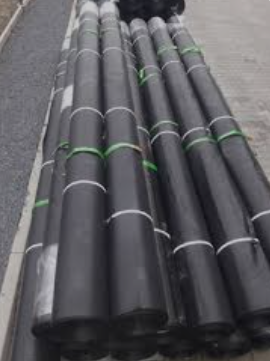- Understanding the Role of Geomembrane Liners in Waste Management
- Innovations in Geomembrane Liners for Water Management
- Geomembrane Liners: A Comprehensive Guide
- The Future of Geomembrane Liners in Civil Engineering
- Geomembrane Liners: Enhancing Landfill Stability
Manager:Alvin Wang
WhatsApp:+62 8983806051
Tel:+86 10-5797-1075
Email:steelwang@okorder.com
Address:3rd Floor, No.2 Building, No.1 Sanlihe Road
Can you put boiling water in HDPE geomembrane?
hdpe Geomembrane (High-Density Polyethylene) is a flexible material that can withstand a variety of environmental strains because to its durability as well as resistance. There may be questions about the efficiency and suitability of this fabric at high temperatures such as boiling water. In this extensive discussion we will look into the heat resistance properties of HDPE Geomembranes, factors that affect how they behave when exposed to hot waters including if it softens or not and finally answer whether or not can we put boiling point liquid inside these liners.

Understanding HDPE Geomembranes
Composition and characteristics:
HDPE geomembrane is a synthetic liner made from high density polyethylene which is derived from ethylene monomer units; thermoplastic polymer type. It has excellent chemical resistance, mechanical properties, and impermeability hence widely used in civil engineering works like environmental protection as well as geotechnical applications where it forms an impermeable barrier against liquids migration thus making them perfect for containment and waterproofing purposes among others.
Thermal properties
Melting Temperature:
The melting temperature of an HDPE liner should be considered while assessing whether or not one can use it with boiling water. Normally, this ranges between 120-135°C (248°F – 275°F) depending on grades and formulations used for manufacturing different types of sheets or rolls meant for specific applications. Heating beyond the given limit leads softening which further causes deformation leading to loss of structure thereby making such materials useless.
Heat Resistance:
Though good heat resistant qualities are exhibited by normal working condition levels but continuous exposure under higher temperatures may affect some mechanical features due to changes in molecular makeup over time caused by prolonged elevated thermal energy input into these plastics during manufacture process steps involved like blowing agents being heated up above their decomposition point followed closely behind with intense cooling cycles so as not allow any chance for further reaction between reactants used which eventually result in undesirable effects such as dimensional alterations or loss of strength whenever subjected to boiling water.
Behaviour when Exposed to Boiling Water
Softening and Deformation:
When boiled, HDPE Geomembranes undergo what is known as thermal softening where polymer chains within the material start relaxing leading ultimately into weakening its structural integrity. During this time if temp gets closer towards melting points then it becomes even more prone to soften hence lose ability act as good barrier against permeation through them.
Potential for Damage:
When heated continuously under extreme conditions like boiling point over long periods there may occur damages like blistering, wrinkling or peeling off from one another (delamination). Such effects are caused by heat induced expansion which alters both surface properties including roughness therefore making rapid cooling down after sudden heating worsen these impacts on liners’ performance exposed directly without any insulation between walls having different temperatures.
Considerations and precautions
Application specifics:
The appropriateness of using HDPE Geomembranes with hot waters depends on factors such as application type and environmental parameters. Heat resistance ratings are high but some mechanical aspects can be affected especially when subjecting them to higher than usual temperature levels over extended durations hence care should always be taken during evaluation tests involving long-term exposure trials at elevated temps in order not compromise their performance limits.
Protection measures:
To protect against damage caused by direct exposure of HDPE geomembrane materials to boiling water, various safety measures need consideration. These may involve use of insulating components like heat proof coatings applied onto top surfaces followed closely behind extra layers made up from other thermoplastic sheets so that thermal insulation properties can be improved while also enhancing overall resistance against heat penetration into these liners. Correct installation techniques must be observed along manufacturer’s instructions given if they are being installed within areas expecting frequent contact with very hot liquids.

Conclusion
In summary, although being good at withstanding heat and thermal strain, one must be careful when employing High-density polyethylene (HDPE) geomembrane in boiling water. The utilization of the geomembrane may not be much impacted by brief contacts with hot water; however, continuous or recurrent exposures can result into flaccidity, distortion and destruction as well. Furthermore, it is possible for designers and employers to guarantee successful installation of such membranes for applications involving heated liquids by studying their thermic characteristics so that necessary preventive measures are taken along this line.
- Previous:Does HDPE geomembrane float or sink in water?
- Next:Can you put hot water in HDPE geomembrane?
-
2024-12-05Geomembrane Liners: A Comprehensive Guide






